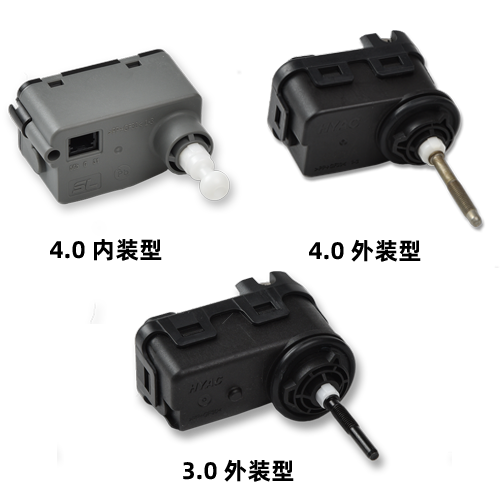What is a car air conditioner damper actuator?
The air-conditioning damper actuator refers to a small micro-motor that drives the different dampers of the air-conditioning. Manual air-conditioning is driven by wire drawing, and electric or automatic air-conditioning is driven by this micro-motor.
1. If you don't know what the air conditioner damper is, it's hard to say. The various modes of the air conditioner, such as blowing the face, blowing the feet, defrosting, etc., are adjusted by the damper at different positions, as well as the temperature.
2. The air-conditioning damper actuator refers to a small micro-motor that drives different air-conditioning dampers to operate.
3. Manual air conditioners are driven by wire drawing, and electric or automatic air conditioners are driven by this micro-motor.
4. Note: If you don't know what the air-conditioning damper is, it's hard to say. The various modes of the air-conditioning, such as blowing the face, blowing the feet, defrosting, etc., are adjusted by the damper at different positions, and the temperature is also hot and cold.
What is the working principle of the damper actuator?
When the compressed air enters the pneumatic actuator from the A nozzle, the gas pushes the double piston to move linearly to both ends (the cylinder head end), the rack on the piston drives the gear on the rotating shaft to rotate 90 degrees counterclockwise, and the valve is opened. .
At this time, the gas at both ends of the pneumatic actuator valve is discharged with the B nozzle. On the contrary, when the compressed air enters the two ends of the pneumatic actuator from the nozzle B, the gas pushes the double plug to move linearly to the middle, the rack on the piston drives the gear on the rotating shaft to rotate 90 degrees clockwise, and the valve is closed. At this time, the gas in the middle of the pneumatic actuator is discharged with the A nozzle. The above is the standard transmission principle.
According to the needs of users, the pneumatic actuator can be installed in the opposite transmission principle to that of the standard type, that is, the valve is opened by turning the shaft clockwise, and the valve is closed by turning counterclockwise. The single-acting (spring return type) pneumatic actuator A nozzle is the air inlet, and the B nozzle is the exhaust hole (the B nozzle should be equipped with a muffler). The inlet of the nozzle A is to open the valve, and the valve is closed by the spring force when the gas is cut off.
Basic composition
1. Type
In the process control system, the actuator consists of the actuator and the automatic adjustment mechanism. The automatic adjustment mechanism directly changes the parameters of the production process through the executive elements, so that the production process meets the predetermined requirements. The actuator accepts the control signal from the controller and converts it into the output of the drive adjustment mechanism (such as angular displacement or linear displacement output).
It also uses appropriate actuators, but the requirements are different from the adjustment mechanism. Actuators are installed directly on the production site, sometimes under harsh working conditions. Whether the normal operation can be maintained directly affects the safety and reliability of the automatic adjustment system.
2. Structure
A device that accepts control signals and exerts a control operation effect on the controlled object in the automation control technology tool. Actuators are divided into three categories: pneumatic, electric and hydraulic actuators according to the driving energy used.

